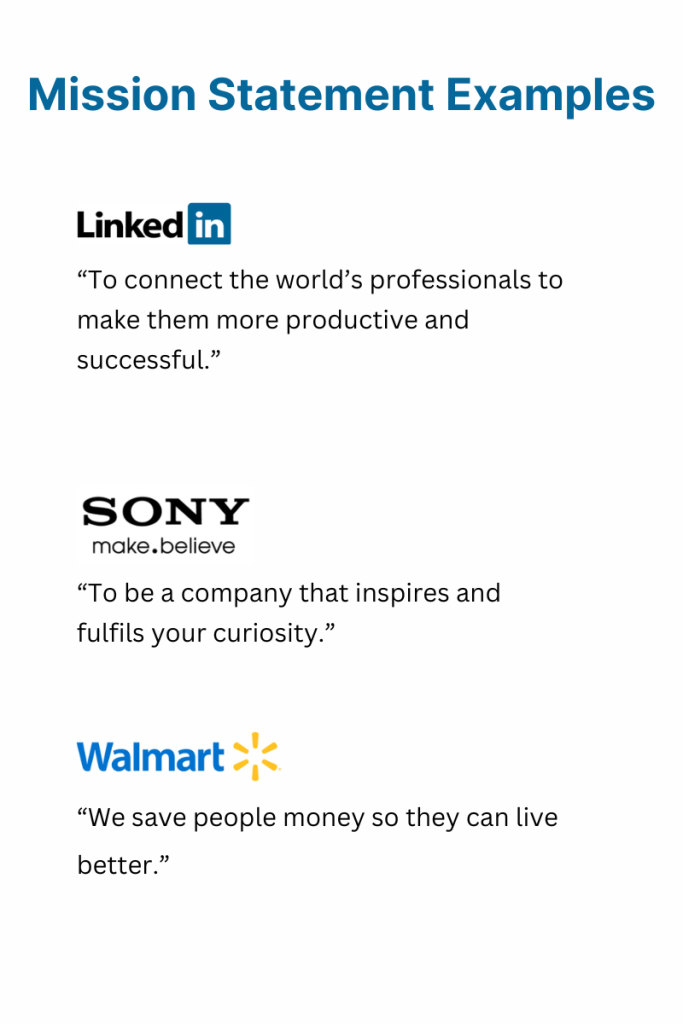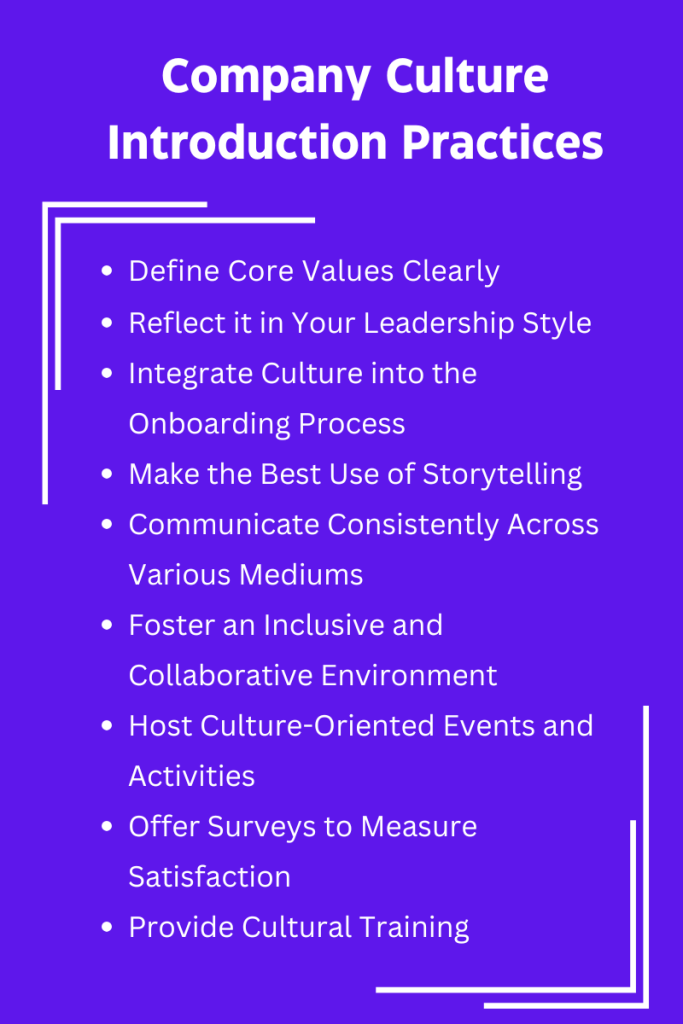When a new hire enters an office on their first day, a company culture introduction becomes essential. The new hire might feel jittery and confused. Or, they may feel jolly and confident. It all depends on how you introduce them with the company and its culture.
Why?
Because workplace culture is a key determinant, affecting how long an employee will stay with the company. According to a recent study*, 46% of job seekers said culture was one of the deciding factors in the application process, while 88% found it at least relatively important.
So, without elongating time, let’s dig in to learning about how to ensure a proper company culture introduction to new hires. You will be surprised by some of the tactics and best practices we present here. These will make your workplace an outstanding one.
Let’s start!
Table of Contents
How Do You Define Company Culture?
Like any form of a culture, a company culture consists of a set of shared core values and practices that personify the organization.
Simply put, it’s how we talk, walk, eat, sleep, etc. in an organization. So for any new hire, knowing the organizational culture becomes an all-important thing. No one wants to be an outcast!
But what are components of an organizational culture? Let’s look at them.
Company Mission
This is the long-term goal that an organization wants to achieve. Usually presented with a Mission Statement, the mission drives the functions and activities toward one ultimate goal. Achieving that goal determines the long-term success and survival of the organization.

Company Vision
The company’s vision, presented with a vision statement, presents a business’s meaning and purpose for stakeholders, especially employees. It defines the desired long-term results of the company’s efforts, and what it stands for.
Let’s look at some examples as follows:

Unilever’s Vision

Core Values
The core values set the beliefs and behavioral standards that a company deems essential and acceptable for their employees.
These act as the pillars of an organization’s culture and vision. These company values usually show how responsible the organization is towards its people and the environment
For instance, the core values of the global giant Unilever include:
- Always working with integrity
- Positive impact
- Continuous commitment
- Setting out our aspirations
- Working with others
Team Dynamics
Team dynamics refers to the interpersonal relationships between the members of a team. The dynamics includes how they interact, communicate and cooperate. How well your team can do these things directly influences what it can accomplish.
Leadership Style
Another key component of workplace culture is how the top management and managers lead and supervise the team members. Their style of leadership determines how open or conservative the culture is. This in turn affects the communication styles in the organization.
A more decentralized approach helps to create an environment where employees feel the ownership of their tasks and more flow of fruitful ideas occurs.
Workplace Environment
A positive workplace environment is a reflection of a company’s culture. When the culture fosters respect, inclusion, and open communication, employees feel valued and motivated. A healthy workplace encourages collaboration, innovation, and trust, driving both personal and organizational growth.
On the other hand, a toxic culture can lead to disengagement and high turnover. Ultimately, a company’s culture shapes how people interact, solve problems, and support each other, making it a key factor in overall success.
What are the Best Practices to Introduce Company Culture?
Maintaining a strong company culture and introducing it to new hires changes with time. However, regardless of the firm, the corporate values and work ethics should be set in such a way that they ensure employee engagement.
Making sure an employee feels part of the family from day one is as vital as retaining them in the long run. Given they meet expectations.
Let’s look at some crucial ways of company culture introduction:
🔵 Define Core Values Clearly
When you first interact with a new hire, be clear about your company’s core values. These are the principles that drive your mission, decision-making, and day-to-day operations.
Ensure that these values are not just words but are reflected in behaviors and business practices. For instance, If diversity is a core value, share your organizational initiatives that support this. This could be diversity in the hiring process or company events promoting it.
🔵 Reflect it in Your Leadership Style
Company leaders should embody the culture you want to foster. Employees often model behaviors based on what they see in management.
Leaders should be approachable and engage with all levels of employees, exemplifying the values and culture of the company. Their behaviors, gestures, and way of talking should reflect a good and amicable workplace culture.
🔵 Integrate Culture into the Onboarding Process
Introduce culture early in the onboarding process. This could include orientation videos, discussions with leadership, or team-building activities.
Assign cultural ambassadors or mentors to new employees to help them integrate smoothly into the culture. For example, a mentor can guide a new hire, especially if he/she is fresher, about how the team members gel together, how they talk, where the spend leisure time, etc.
🔵 Make the Best Use of Storytelling
Storytelling presents a great way to absorb and intrigue new hires into the company culture. You can use real stories from within the company to illustrate the company’s values and culture.
Tie the company’s journey and evolution to its culture. Explain how the culture has shaped the company’s growth and success.These could include employee experiences, customer testimonials, or specific challenges overcome through teamwork.
🔵 Communicate Consistently Across Various Mediums
Internal communications can be an excellent method of company culture introduction. Ensure that company culture is communicated through internal newsletters, intranet, emails, and meetings.
When a new hire receives an email with a newsletter or content that discusses organizational culture, it emphasizes the importance of the core culture and employee engagement rises.
🔵 Foster an Inclusive and Collaborative Environment
Encourage new joiners to extend their feedback from the onset. Open channels for feedback and discussion, whether through surveys, town halls, or one-on-one meetings.
You may also promote cross-functional collaboration to build a diverse and inclusive work environment where different perspectives are valued. This ensures employee integration with other teams.
🔵 Host Culture-Oriented Events and Activities
Plan activities like team-building exercises, charity events, hackathons, or wellness days that reflect and reinforce company values. You can make them part of the orientation by making the orientation session happen across multiple days.
Recognize and reward behaviors that reflect company values, both at the individual and team levels. You can give away awards to top-performing employees during the orientation sessions of the new hires, helping them understand how the company values people putting in their efforts.
🔵 Offer Surveys to Measure Satisfaction
Extend culture surveys during orientation. For that, you need to arrange initiatives across multiple days to let the new hires assess the culture initially.
Periodically measure how employees perceive the culture through surveys or interviews, identifying gaps between the ideal and the actual culture.
Take their feedback and adapt and grow. Workplace culture should evolve with the company. Regularly reviewing and updating values, practices, and rituals reflects the current state and goals of the organization.
🔵 Provide Cultural Training
You can definitely offer training programs that help new employees understand and engage with the company’s culture from the very beginning. The training can be a week or month long, depending on how you plan to help your new employees absorb into the culture.
Get the new employees’ feedback as well as post-training assessment to see how well they understood the culture. You can also take periodic tests during the first three months to assess their transfer of training onto their work.

Benefits of Having a Strong Company Culture Introduction
So what are some important benefits of organizational culture? Let’s see:
✔️ Smooth Onboarding Process
Companies with strong organizational cultures often have well-structured onboarding processes. By providing clear orientation, training, and performance management programs, new hires can more easily transition into their roles. This reduces frustration and ensures new employees are aligned with the company’s values, contributing to long-term loyalty and success.
✔️ Boosted Employee Engagement
A workplace with a clear sense of purpose and defined expectations fosters greater employee engagement. When employees know what’s expected of them and feel connected to their work, they’re naturally more motivated. This heightened level of engagement translates into improved productivity and positive interactions.
A survey by BambooHR shows that 89% of employees report being engaged at work following an effective onboarding experience.
✔️ Increased Productivity
When employees have the tools and support they need, productivity soars. A strong organizational culture brings together teams with similar skill sets, allowing them to collaborate more efficiently. These shared backgrounds help teams tackle projects faster and with greater focus.
✔️ Greater Sense of Achievement
Not every business can turn employees into passionate brand ambassadors, but companies with strong cultures can. When a company consistently recognizes and celebrates employee achievements, it transforms the workforce. Employees feel a greater sense of accomplishment and become more deeply invested in the company’s success.
✔️ Retention of Top Talent
A workplace that fosters community is more likely to retain its top performers. Talented employees often leave environments where they feel undervalued. A positive organizational culture creates a high-performance atmosphere where skilled employees feel appreciated, leading to better retention and a more fulfilling employee experience.
✔️ Lower Turnover Rates
Employees who feel valued and respected are far more likely to stay with a company. Building a strong organizational culture that aligns with core values and the company’s mission is key. When employees are happy, turnover decreases, reducing the time and costs associated with hiring.
✔️ Fostering a Healthy Team Environment
A clear organizational culture streamlines workflows and enhances decision-making. It helps teams overcome confusion and stay focused on their objectives. When employees are well-informed and processes are transparent, teamwork thrives. A unified culture promotes purposeful collaboration, allowing teams to work together more efficiently and effectively.
✔️ Strengthened Brand Identity
A company’s culture shapes its public image. People form impressions based on their experiences, both as employees and customers. If a company lacks a solid culture or has a weak reputation, it can deter potential customers. On the flip side, a strong brand identity attracts both business and job candidates who align with the company’s values and mission.
Challenges of Ensuring a Robust Organizational Culture
On the flip side, there are a few challenges the HR personnel should check and address before ensuring a proper organizational culture introduction:
⚠️ Have the Right Budget & Sufficient Time
The most vital factor that can become a hurdle in implementing a strong company culture introduction is the budget. For instance, printing or creating materials that reflect your culture might require spending on them. These could be newsletters, handouts, employee handbooks, etc.
This becomes an apparent issue when there is onboarding at scale or multiple new hires. Even if you are creating the materials digitally, it requires time. Plus, if you plan to enact a role-play for the new hires, existing employees might have to take time out of their busy schedules to perform properly.
⚠️ Communication Issues
New hires, especially if they are freshers, may feel a bit overwhelmed with the corporate values or culture. This can lead to interpretation issues that create communication gaps between the employer and employees.
It is always best to convey company culture and policies in the easiest language possible to new hires. However, that itself is not always easy, especially when communicating the code of conduct (COC).
⚠️ Equipment and Stationary Issues
New employee means new stationeries and devices. Unless they are remote. And setting up a workstation for the new employee in quick time and smoothly is part of the culture.
However, if there are shipping delays or other malfunctions, the process can be hampered, creating a break in smooth official tasks. This is something common with employees requiring high-spec devices.
⚠️ Meeting Industry Standard
As organizations across the world have started to understand the importance of a positive workplace culture and strong employee engagement, your competitors in the market can also offer some robust cultural strategies.
In such cases, new employees can always compare their new employer with other firms in the industry and assess the flaws, if any, in your company. Thus, if you do not meet the workplace standards of other companies, employees may start thinking otherwise and leave.
FAQs
What are some ways to measure company culture effectiveness?
There are several indirect ways to measure your culture. The following metrics can give you an indication of the quality of your company culture:
Number of employee referrals: This gives an indication to what extent your employees are promoting your organization and referring others to join.
Employee turnover rates: If new hires and high potentials are voluntarily leaving your organization, this may be an indication of toxic culture.
Communication metrics: Email open rates, read receipts, number of intranet page visits, and length of these visits are also good indicators of the health of your organizational culture. If these rates are low, they may indicate staff are not engaged with the organizations as they should be.
Are there any tools out there to enhance workplace culture?
Yes, there are tools for gathering feedback from employees that let you assess whether you’re on the right track with your culture.
ADP Workforce Now, Engagedly, Workday, BambooHR, etc. are a few examples of HR software that measure and analyze the effectiveness of organizational culture.
Summing Up
Company culture introduction for new hires is an excellent way to start off building toward a strong workplace culture. If you can win the employees’ hearts from the very beginning and help them understand your core values, the battle is half won.
The best practices mentioned above are ways to help you guide new joiners about your culture. Make your company culture as effective as possible and spread the word among all!
References
*https://teamstage.io/company-culture-statistics/

Leave a Reply